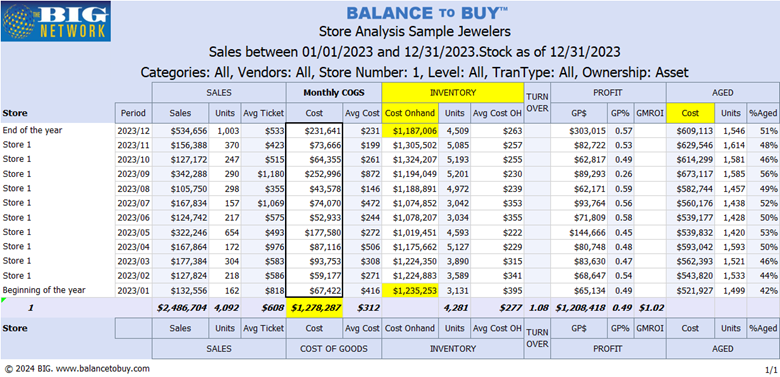Preparing for December
by Abe Sherman – CEO, BIG – Buyers Intelligence Group
September 10, 2024
Let’s assume that you’ve read every article on the subject of preparing your inventory for the fall selling season. Instead of regurgitating the same-old advice (reordering fast-sellers and backing up multi-sellers and stock balancing aged inventory, and, well …. you know the rest), let’s take a different approach. Let’s start with your end-game in mind.
It’s common to have too much inventory in-stock today but it’s also far too common to have too much inventory in-stock at the end of the year. Why does this keep happening? One of the most common mistakes people make is they don’t take into consideration how much of their sales will come from re-orders, special orders and custom. Many items sell multiple times a year but ordering just 1 of them at a time, several times during the last quarter, won’t do anything to lower your year-end inventory. That’s because you may not be adequately including the reorders in your planning process.
This year, especially if you have a too much aged inventory (more than 40% of asset) and/or you’re hoping for better cash flow, I’d like to encourage you to have a year-end inventory goal. Most jewelers have a sales goal, along with the marketing plans, contests and bonuses that are set in motion to help achieve those goals. But few jewelers have year-end inventory goals. When you end the year with as much inventory as you started the year with, but you’ve sold hundreds of thousands or millions of dollars of inventory over that same period, AND you are not happy with either your cash flow or aged inventory levels, we can point to the problem, and it has little to do with your sales and a lot to do with what you’ve been able to accomplish vis-à-vis inventory reduction.
In this example, this store sold nearly $1,300,000 at cost last year, without memo. Their ending inventory of $1,187,000 is just $48,000 lower than their inventory at the beginning of the year. Now take a look at their Aged which increased by $87,000!

An overall turn of 1.08 can be improved relatively quickly, but the amount of aged inventory that builds up over time is more difficult to deal with. If you are interested in improving cash flow, this is the time to plan how you’re going to use your non-performing inventory to fill in your selections by category and price point. I’ve attached a link to a 5 minute video that I did about 10 years ago on re-merchandising aged inventory.
Re-merchandising aged inventory is especially important in today’s marketplace when you have gold prices that are higher than when you purchased that inventory but at the same time, you have diamonds in stock that may have had declined. Buying new inventory to fill in your category/price-points when you can fill those needs with your existing inventory (that you’ve already paid for) won’t do anything to reduce your total inventory levels by the end of this year, let alone your aged inventory. You can re-allocate the hundreds or thousands of items you already own, improve your cash flow and alleviate a lot of pressure that ending the year with too much inventory (and payables) causes. This is the perfect time of the year to start to tackle this. As always, please reach out to us with any questions.






